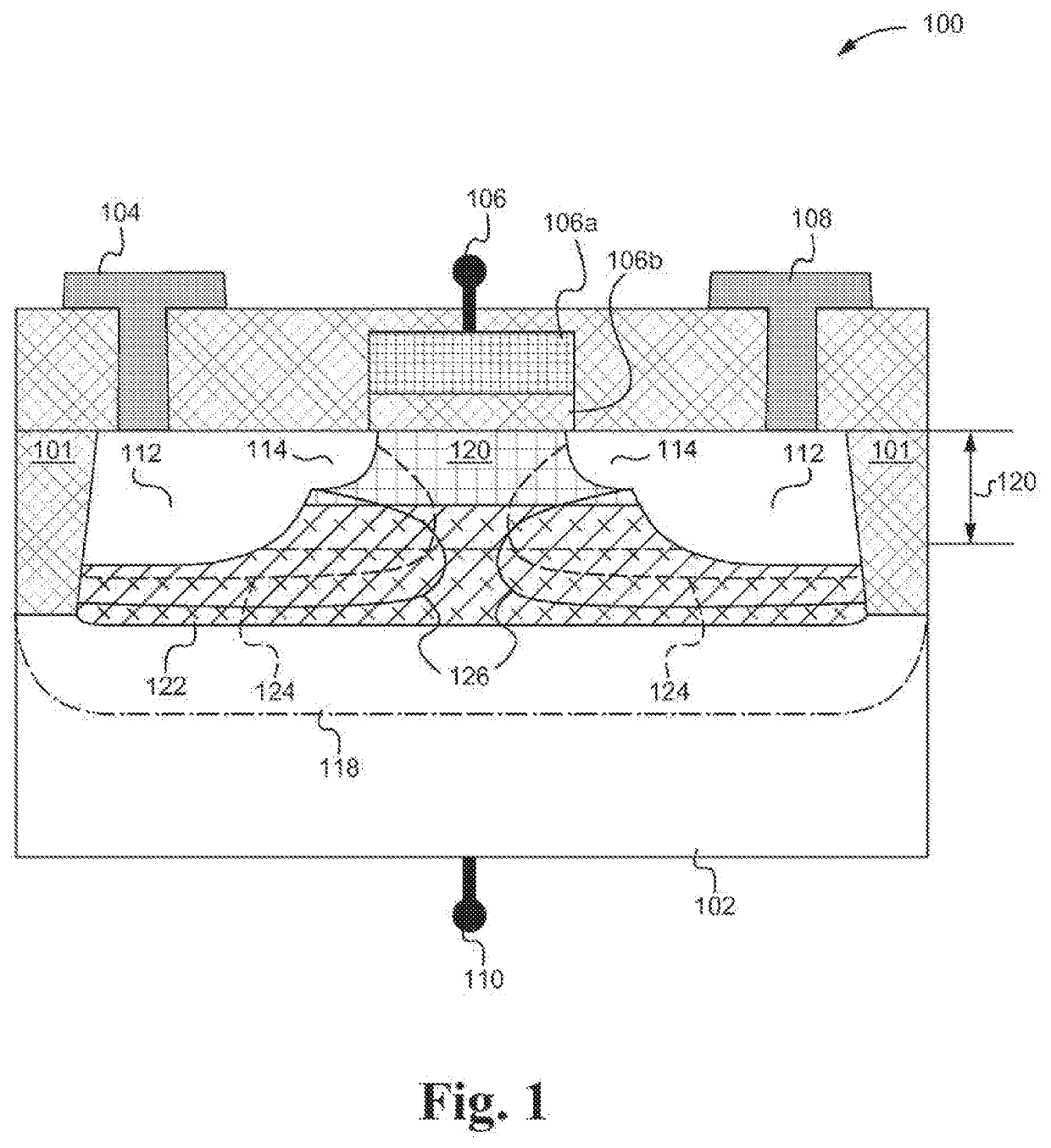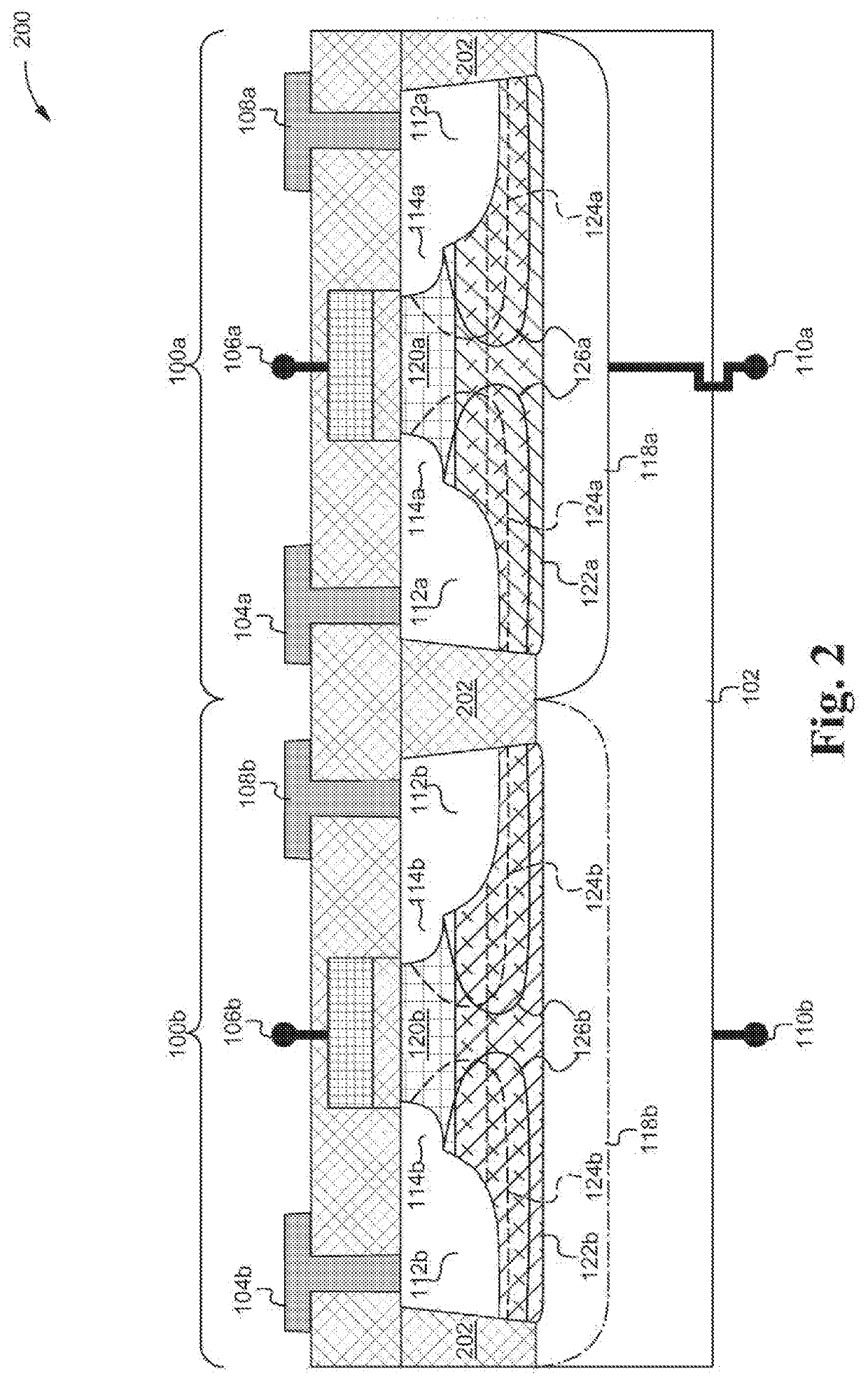Transistor structure with multiple halo implants having epitaxial layer over semiconductor-on-insulator substrate
a technology of semiconductor-on-insulator substrate and transistor, which is applied in the direction of transistors, semiconductor devices, electrical devices, etc., can solve the problems of affecting the functionality, yield and reliability of transistors, physical dimensions pose certain complexities, and severely affect the specific characteristics of transistors, so as to reduce process variability, reduce process variability, and minimize the effect of transistor resistan
- Summary
- Abstract
- Description
- Claims
- Application Information
AI Technical Summary
Benefits of technology
Problems solved by technology
Method used
Image
Examples
Embodiment Construction
:
[0026]Embodiments of the application are directed systems, devices and methods of making a transistor structure having an epitaxial layer on top of a doped substrate such that the epitaxial layer is able to be un-doped or lightly doped thereby reducing process variability (e.g. random dopant variability in the channel and / or other regions) in the transistor structure. In particular, the epitaxial layer enables the transistor structure to have optimized source-drain and / or channel regions to mitigate the risk of process variability in device and circuit performance despite shrinking transistor dimensions. The transistor structure is also able to comprise a plurality of halo regions, formed in a semiconductor-on-insulator substrate, at varying depths that enable a peak concentration of substrate impurities at a level below the gate such that the resistance of the transistor is minimized along with the threshold voltage, threshold voltage fluctuations, short channel effects, and leaka...
PUM
| Property | Measurement | Unit |
|---|---|---|
| thickness | aaaaa | aaaaa |
| thickness | aaaaa | aaaaa |
| thickness | aaaaa | aaaaa |
Abstract
Description
Claims
Application Information
 Login to View More
Login to View More - R&D
- Intellectual Property
- Life Sciences
- Materials
- Tech Scout
- Unparalleled Data Quality
- Higher Quality Content
- 60% Fewer Hallucinations
Browse by: Latest US Patents, China's latest patents, Technical Efficacy Thesaurus, Application Domain, Technology Topic, Popular Technical Reports.
© 2025 PatSnap. All rights reserved.Legal|Privacy policy|Modern Slavery Act Transparency Statement|Sitemap|About US| Contact US: help@patsnap.com



